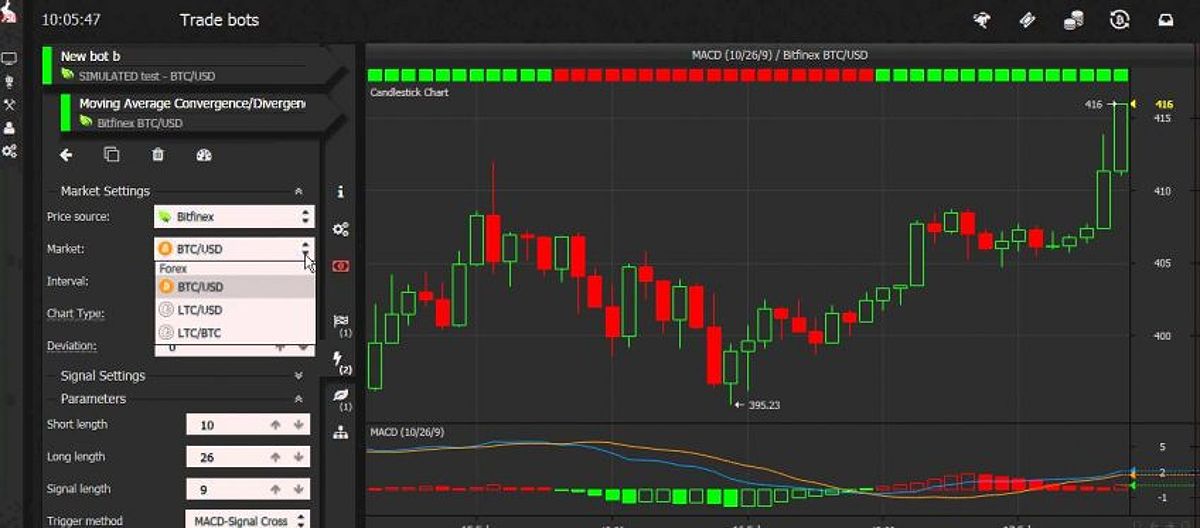In the ever-evolving world of cryptocurrency, automated trading bots have emerged as a powerful tool for investors seeking to capitalize on market opportunities. This article provides a comprehensive guide on how to make a crypto trading bot, covering everything from programming language selection to deployment and optimization.
How To Make A Crypto Trading Bot: Choosing The Right Programming Language
When it comes to selecting the programming language for your crypto trading bot, the choice is not as straightforward as it may seem. While Python, JavaScript, and Java are commonly recommended, the “right” language ultimately depends on your specific requirements and development expertise.
Python’s simplicity and extensive library support make it a popular choice, but its performance and scalability may not always meet the high-frequency trading demands of the crypto market. JavaScript’s flexibility and the ability to create cross-platform applications are intriguing, but its asynchronous nature can introduce unexpected complications.
Java, on the other hand, with its robust performance and strong typing, seems like a logical choice for building scalable and secure trading bots. However, its perceived complexity and steeper learning curve may deter some developers.
Rather than blindly following the crowd, I encourage you to deeply consider the specific requirements of your trading bot and your own development expertise. Experiment with different languages, benchmark their performance, and evaluate their suitability for your project’s unique needs. The choice that aligns with your bot’s objectives and your own strengths as a developer may not always be the most popular one.
 Crypto trading bot
Crypto trading bot
Exploring Crypto Trading Strategies: Trend Following, Arbitrage, And Market Making
Developing a successful crypto trading bot requires a profound understanding of various trading strategies. Trend following, arbitrage, and market making are commonly discussed approaches, but the reality is far more nuanced.
Trend Following
Trend following can be a powerful tool, but it also comes with its own set of risks. The ability to accurately identify and react to market trends is not as straightforward as it may seem, and I’ve witnessed bots that have been outsmarted by the unpredictable nature of the crypto market.
Arbitrage
Arbitrage, on the other hand, can be a lucrative strategy, but it demands meticulous attention to price differences and the ability to execute trades with lightning-fast precision. Missteps in this realm can lead to significant losses, and I’ve encountered developers who have struggled to strike the right balance between opportunity and risk.
Market Making
Market making, while potentially offering a more stable revenue stream, requires a deep understanding of liquidity dynamics, order book management, and the ability to adapt to rapidly changing market conditions. I’ve seen developers underestimate the complexities involved, leading to suboptimal bot performance and dwindling profits.
Rather than simply adopting a single strategy, I encourage you to take a more holistic approach. Experiment with a combination of strategies, continuously analyze their performance, and be willing to make adjustments as the market evolves. The most successful crypto trading bots are often those that can seamlessly adapt to changing market conditions and capitalize on a diverse range of opportunities.
Navigating The Challenges Of Deployment And Optimization
Once you’ve built your crypto trading bot, the real test begins — deploying it and ensuring its ongoing effectiveness. This is where many developers encounter unexpected obstacles and find themselves scrambling to maintain their bot’s profitability.
Thorough Testing
Thorough testing, both through backtesting and paper trading, is of the utmost importance. I’ve seen bots that performed exceptionally well in simulated environments crumble when faced with the realities of the live market. Developers must be diligent in their testing, leaving no stone unturned and anticipating potential edge cases that could undermine their bot’s decision-making.
Deployment
Deploying a crypto trading bot on a live exchange requires a deep understanding of the exchange’s API, data formats, and communication protocols. Missteps in this area can lead to costly errors and downtime, eroding the bot’s potential for success.
Ongoing Optimization
Moreover, ongoing optimization is crucial for maintaining the bot’s performance. I’ve encountered developers who become complacent, failing to adapt their trading strategies, algorithms, and risk management protocols to the ever-changing market landscape. This complacency can quickly turn a once-profitable bot into a liability.
To overcome these challenges, I recommend that you approach deployment and optimization with the same level of rigor and attention to detail as you did during the development phase. Stay vigilant, continuously monitor your bot’s performance, and be willing to make the necessary adjustments to ensure its longevity and profitability.
Embracing The Unconventional: A Path To True Innovation
As I reflect on my experiences in the world of crypto trading bots, I can’t help but feel that the conventional wisdom often falls short. The promise of passive profits and effortless market domination is alluring, but the reality is far more complex and nuanced.
Developers who seek to create truly innovative and effective crypto trading bots must be willing to challenge the status quo, embrace unconventional approaches, and think critically about the industry’s accepted practices. It’s not enough to simply follow the crowd and replicate what others have done — the most successful bots are those that can identify and capitalize on overlooked opportunities.
In my view, the path to building a truly groundbreaking crypto trading bot lies in a relentless pursuit of understanding, a willingness to experiment, and a deep appreciation for the complexities of the market. It’s about pushing the boundaries of what’s possible, challenging conventional wisdom, and being unafraid to chart your own course.
Frequently Asked Questions
What are the benefits of using a crypto trading bot? Crypto trading bots can automate trading operations, allowing investors to capitalize on market opportunities around the clock. They can potentially generate profits from market volatility and streamline trading processes, reducing the risk of human error. However, it’s crucial to approach their development and deployment with a critical mindset, as the reality is often more complex than the promised benefits.
What are the risks of using a crypto trading bot? The primary risks of using a crypto trading bot include vulnerabilities in the bot’s algorithms, which could lead to significant financial losses if not addressed. The volatility of the cryptocurrency market also poses inherent risks that must be carefully managed. Developers must prioritize thorough testing, secure deployment, and ongoing optimization to mitigate these risks.
How much does it cost to develop a crypto trading bot? The cost of developing a crypto trading bot can vary widely depending on the complexity of the project, the expertise of the development team, and the resources required. Factors such as the choice of programming language, the number of exchanges to be integrated, and the level of customization can all impact the overall cost. Developers must carefully weigh the potential benefits against the investment required to build an effective and profitable trading bot.
What are some of the best crypto trading bots available? There is no definitive list of the “best” crypto trading bots, as their performance and effectiveness can vary greatly depending on market conditions, trading strategies, and individual user needs. Some popular options include Cryptohopper, Hummingbot, and Gunbot, but developers should thoroughly research and test these platforms to determine which one aligns best with their specific requirements.
How can I improve the performance of my crypto trading bot? Improving the performance of a crypto trading bot requires a multifaceted approach that includes continuous refinement of the trading algorithms, risk management strategies, and resource utilization. Developers must closely monitor the bot’s performance, analyze market data, and make timely adjustments to ensure optimal efficiency and profitability. This process of ongoing optimization and adaptation is crucial for maintaining the bot’s competitiveness in the dynamic cryptocurrency market.
Conclusion
As a software developer, I’ve come to understand that the process of building a successful crypto trading bot is far from straightforward. The conventional wisdom surrounding these automated trading tools often fails to capture the true complexities and challenges involved.
Through my own experiences and a critical analysis of the industry, I’ve learned that the path to creating an effective crypto trading bot requires a willingness to challenge accepted norms, embrace unconventional approaches, and delve deep into the nuances of the cryptocurrency market. It’s not enough to simply follow the crowd and replicate what others have done — the most successful bots are those that can identify and capitalize on overlooked opportunities.
By carefully considering the programming language, trading strategies, deployment, and optimization processes, developers can create crypto trading bots that are not only profitable but also adaptable and resilient in the face of the market’s ever-changing dynamics. It’s a journey that demands rigor, critical thinking, and a constant pursuit of understanding — but for those willing to take on the challenge, the rewards can be substantial.
So, if you’re a software developer looking to explore the world of crypto trading bots, I urge you to approach it with a fresh perspective, a willingness to question the status quo, and a determination to push the boundaries of what’s possible. It’s only through this kind of unconventional thinking that you’ll be able to unlock the true potential of automated trading in the dynamic and ever-evolving cryptocurrency landscape.

